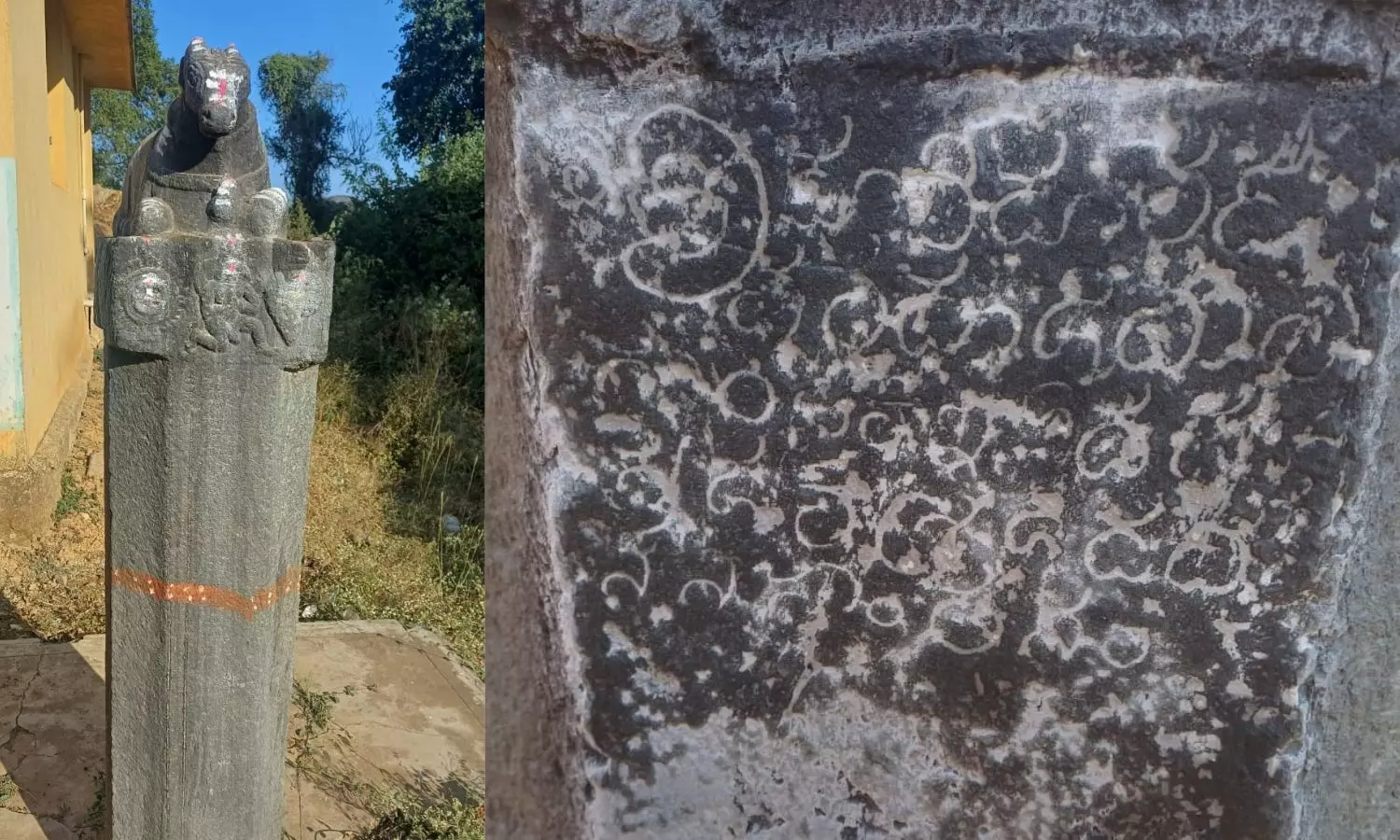13th-Century Garuda-Nandi Pillar Discovered in Karnataka’s Malagunda
Rare inscription from Seuna dynasty era highlights Shaiva-Vaishnava harmony

A unique 13th-century Garuda-Nandi pillar with an inscription has been discovered in Malagunda village, Hanagal taluk, Karnataka. The find was made by Dr. R. Shejeshwara, Director of Archaeology, Museums, and Heritage Department, Hampi, during a recent field visit.
The intricately carved 165 cm tall and 14 cm wide stone pillar stands as a symbol of Shaiva-Vaishnava harmony, featuring Nandi and Garuda, the sacred mounts of Shiva and Vishnu, respectively. Dating back to the Seuna dynasty period, the west-facing Nandi sculpture sits atop the pillar, while below it, Garuda is depicted alongside Vishnu’s divine symbols, the Shankha (conch) and Chakra (discus).
The Kannada inscription, consisting of five lines, warns:
"Anyone who destroys the dharmic endowment of Malligunda, the village of Harihara Deva, will face lineage destruction."
The pillar was erected as part of a religious endowment, a historical practice of using inscriptions to protect donated lands. Dr. Shejeshwara noted that due to the high cost of temple construction in ancient times, symbolic pillars like this served as markers of devotion and grants. Similar structures have been found in Balasanur (Harihara taluk), Guddahosalli and Nadiharalahalli (Ranebennur taluk), and Kod village (Hirekerur taluk).
Dr. Shejeshwara expressed gratitude to Dr. Chamaraja Kammar, Dr. Ravikumar K. Navalgund, Dr. Jagadish, and the villagers of Malagunda for their support in the field study.

